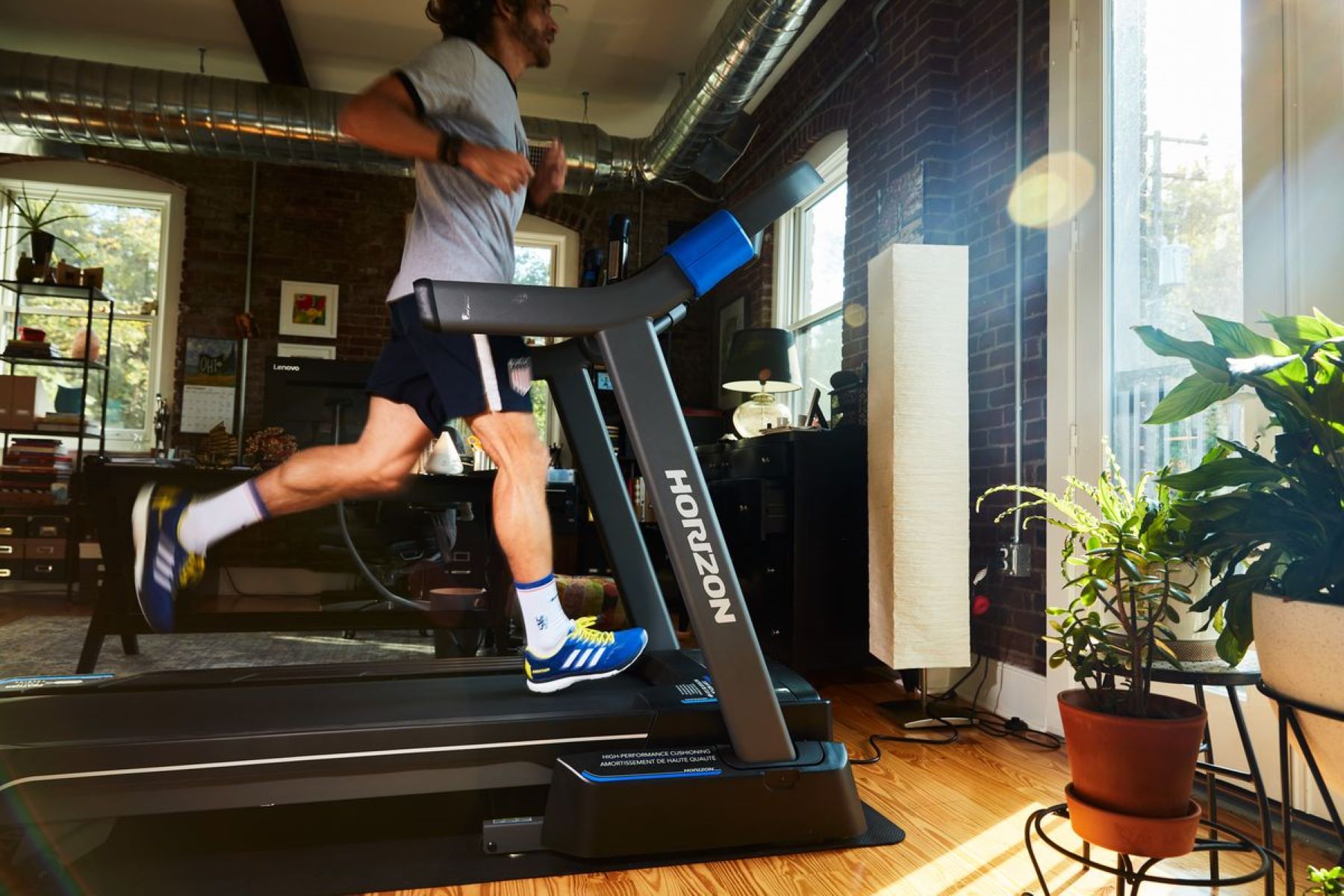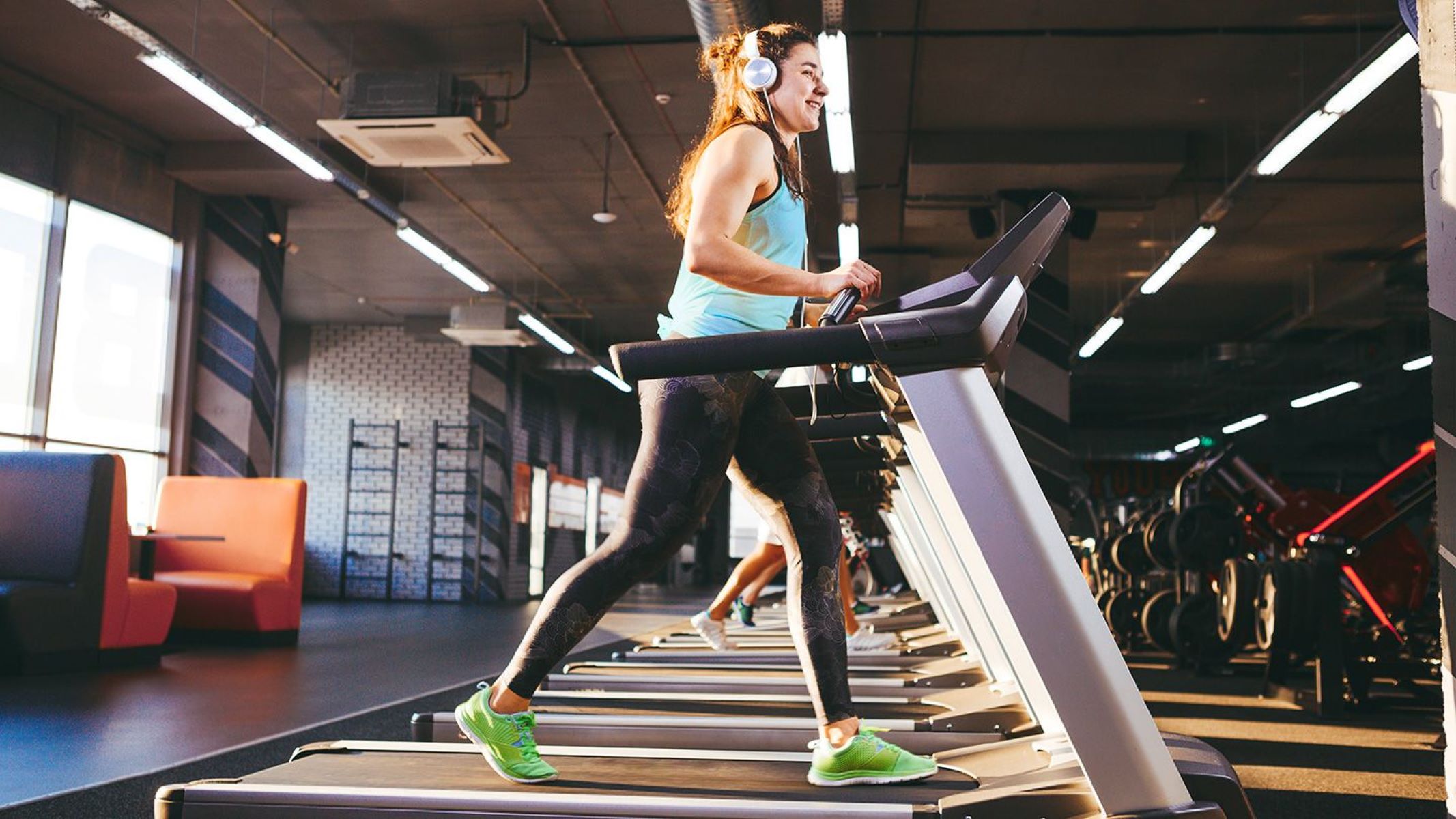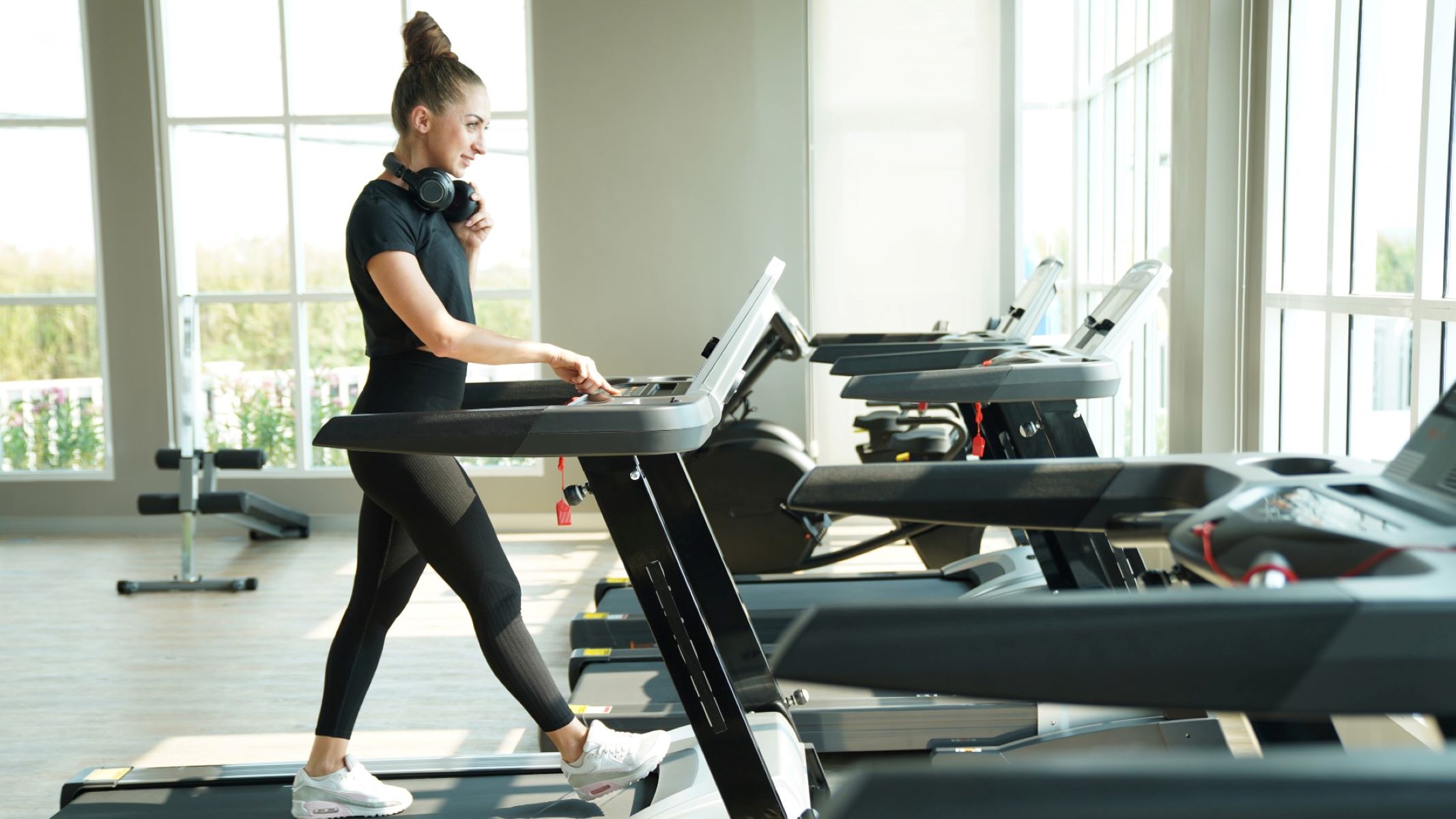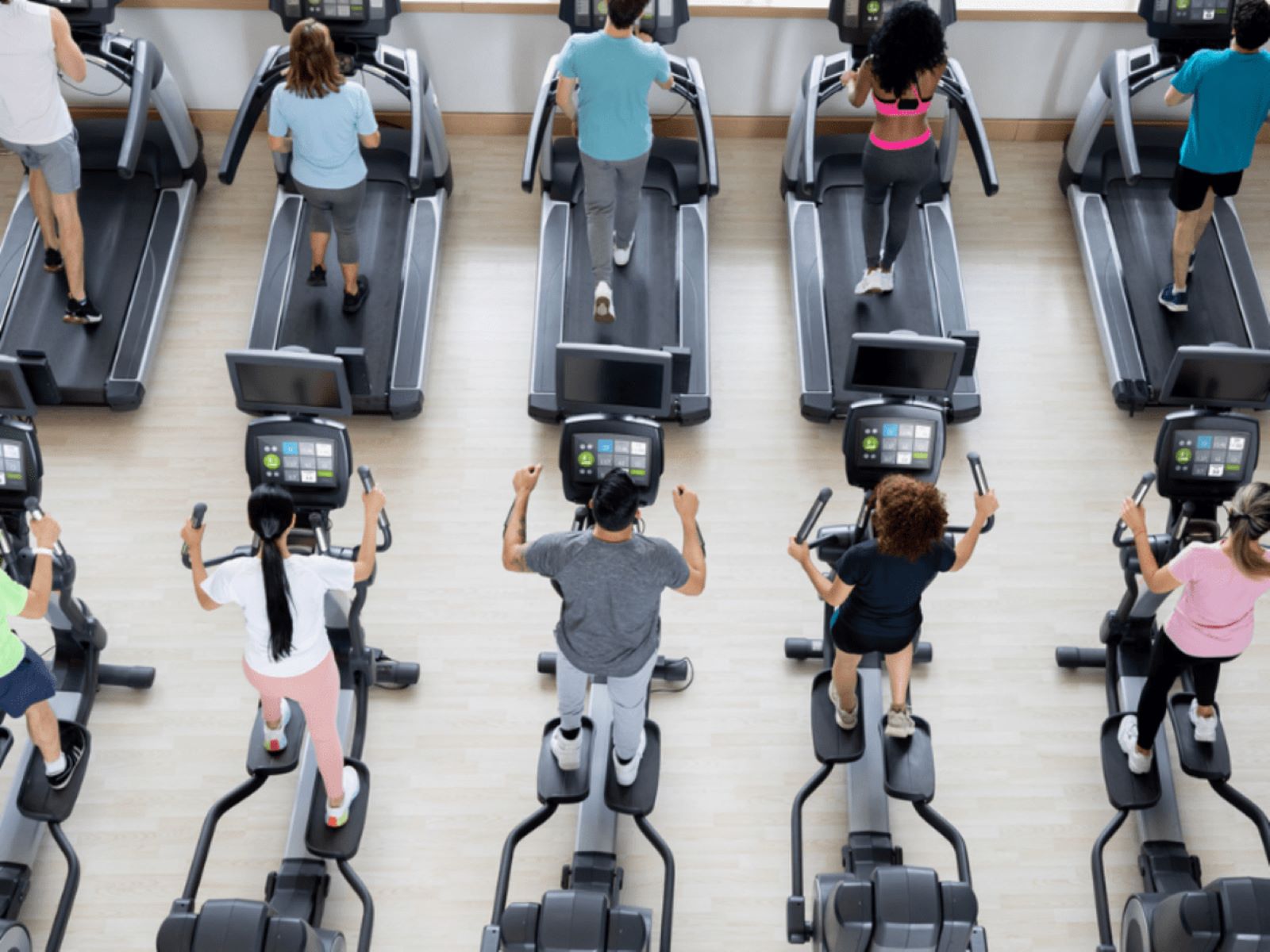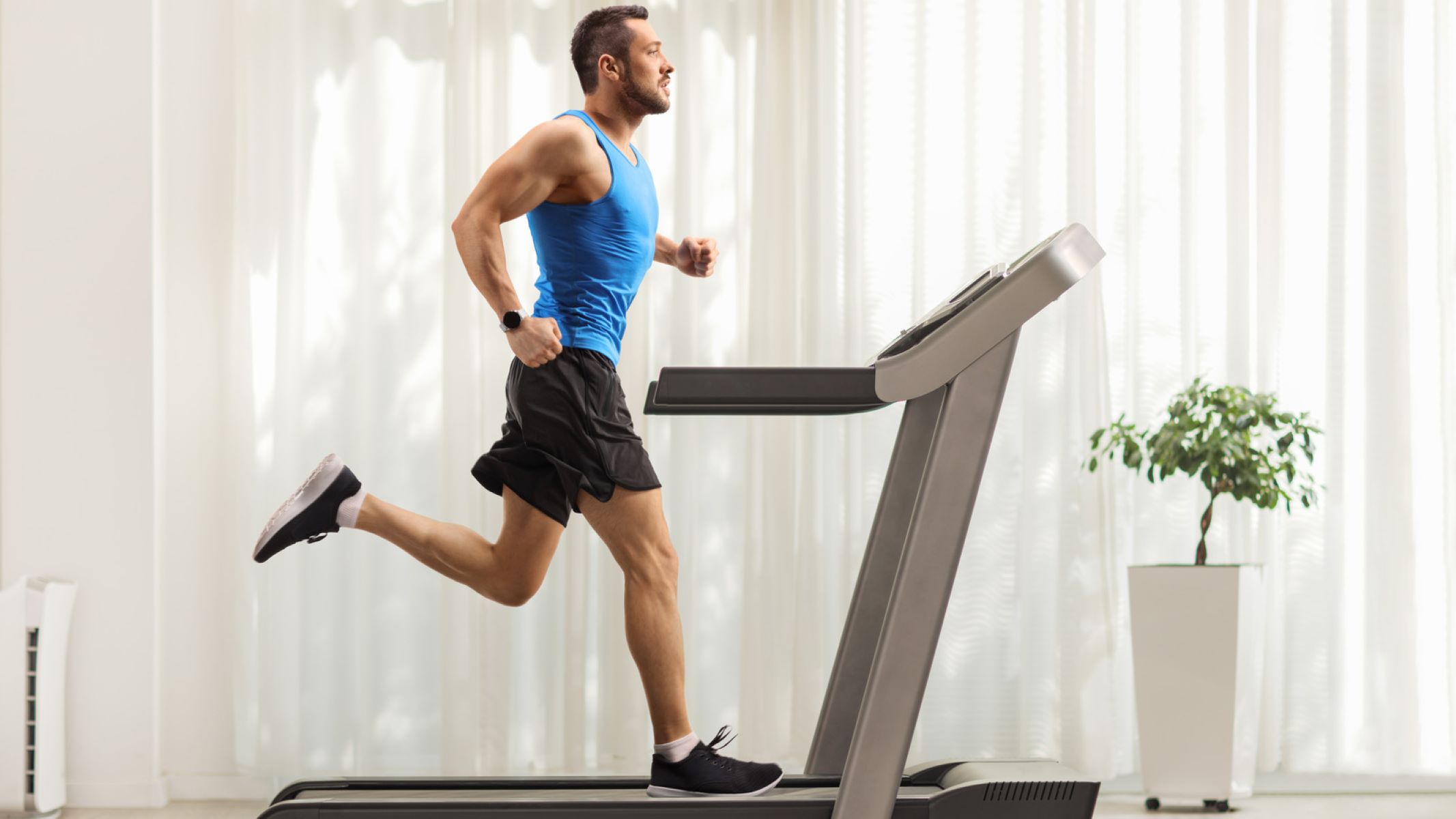Home>Misc>Featured>How Long To Burn 500 Calories On Treadmill
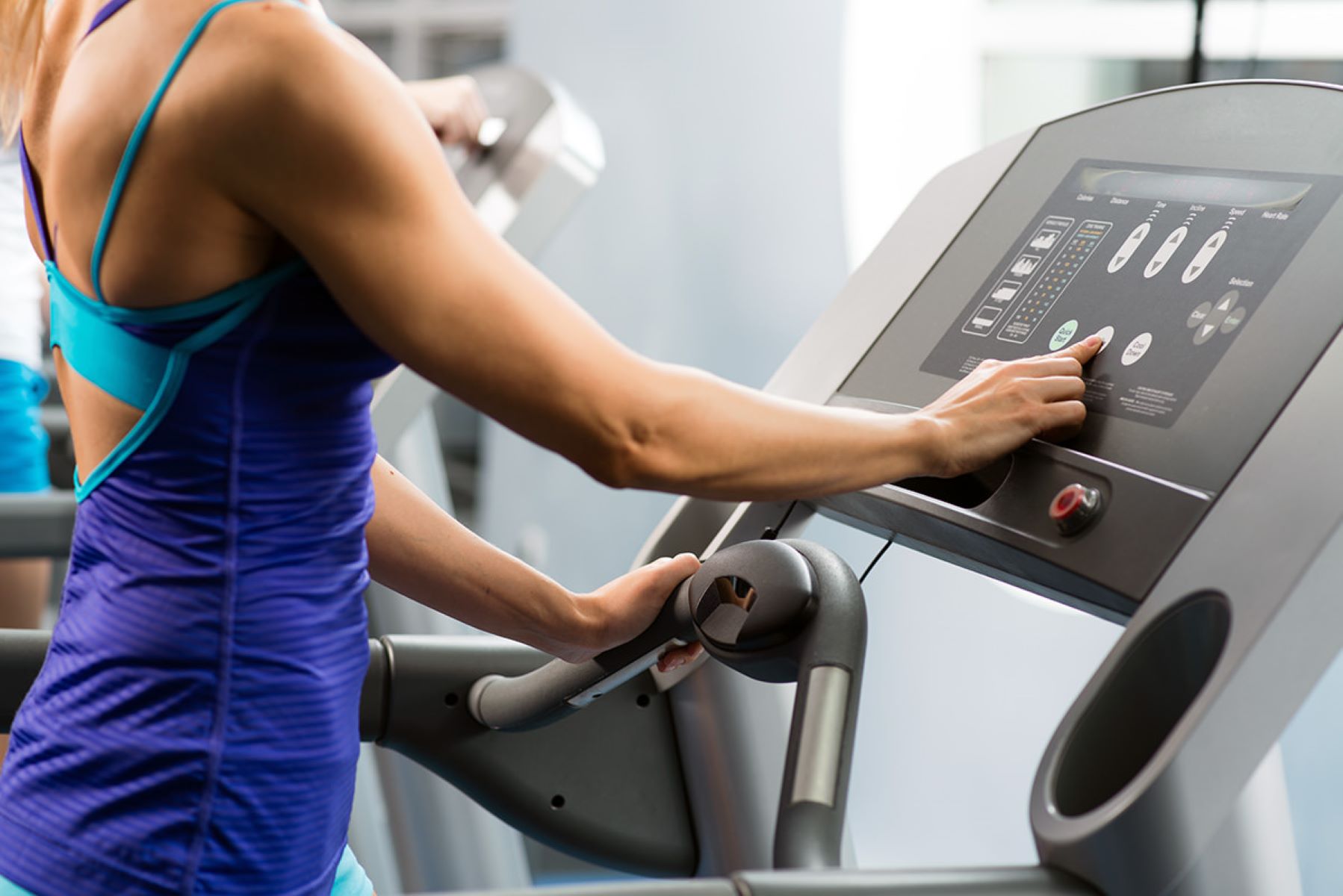

Featured
How Long To Burn 500 Calories On Treadmill
Modified: August 21, 2023
Featured: Discover how long it takes to burn 500 calories on the treadmill and achieve your fitness goals in no time.
Introduction
When it comes to burning calories and getting in shape, the treadmill is one of the most popular pieces of exercise equipment. Whether you are a beginner or a seasoned athlete, the treadmill offers a convenient and effective way to burn calories and improve your cardiovascular fitness. But how long does it actually take to burn 500 calories on a treadmill?
The time it takes to burn 500 calories on a treadmill depends on various factors, such as your weight, fitness level, speed, and incline. In this article, we will explore these factors and provide you with some tips and insights to help you optimize your treadmill workout and achieve your calorie burning goals.
Understanding how your body burns calories is essential to maximizing your workout. Calories are a measure of energy, and you burn them by engaging in physical activity. The more intense the activity, the more calories you burn. The treadmill allows you to control the intensity of your workout by adjusting the speed and incline, which directly impacts the number of calories burned.
It is important to note that everyone’s body is different, and calorie burn can vary from person to person. The figures provided in this article are estimates based on averages. To get a more accurate measure of your calorie burn, you may consider using a heart rate monitor or fitness tracker.
Now let’s delve into the factors that can affect your calorie burn on the treadmill.
Factors Affecting Calorie Burn on Treadmill
Several factors come into play when determining how many calories you burn on the treadmill. Understanding these factors can help you optimize your workout and maximize your calorie burn.
- Weight: Your weight plays a significant role in calorie burn. Generally, the more you weigh, the more calories you will burn during exercise. This is because it requires more energy to move a heavier body.
- Fitness Level: Your fitness level also impacts calorie burn. Fit individuals tend to have more muscle mass, which increases their basal metabolic rate and overall calorie burn. As you become more fit, you will burn calories more efficiently.
- Speed: The speed at which you walk or run on the treadmill affects how many calories you burn. The faster you go, the more energy your body needs to sustain the movement, resulting in greater calorie expenditure.
- Incline: The incline of the treadmill also has a significant impact on calorie burn. Walking or running uphill requires more effort from your muscles, increasing the intensity of the workout and consequently boosting calorie burn.
- Durations and Frequency: The length and frequency of your treadmill sessions also affect calorie burn. Longer workouts and more frequent sessions lead to greater overall energy expenditure.
Keep in mind that these factors are interconnected, and modifying one can impact the others. For example, increasing speed or incline will require more energy and may lead to a shorter workout duration.
Understanding these factors can help you tailor your treadmill workouts to your specific goals. If your aim is to burn 500 calories, you can adjust these variables accordingly to achieve the desired outcome.
Now that we’ve covered the factors that affect calorie burn on the treadmill, let’s dive into how you can calculate your calorie burn during a treadmill session.
Calculating Calorie Burn on Treadmill
Calculating the calorie burn on a treadmill can provide you with valuable insights into your workout progress and help you set realistic goals. While it’s not an exact science, there are a few methods you can use to estimate your calorie expenditure.
One common method is to use the MET (Metabolic Equivalent of Task) system. MET measures the energy cost of physical activities relative to your resting metabolic rate. For example, an activity with a MET value of 4 means you are burning four times the number of calories compared to resting.
Treadmill manufacturers often provide MET values for various speeds and inclines on their machines. By using these values along with your weight, you can estimate your calorie burn. There are also online calculators and smartphone apps that can help you make these calculations easily.
Another method is to use heart rate monitoring devices or fitness trackers. These devices can estimate calorie burn by measuring your heart rate during exercise. By inputting your age, weight, and workout duration, they can provide a more accurate estimation of your calorie expenditure.
It’s important to note that these calculations are just estimations and may not be 100% accurate for everyone. Factors such as individual metabolic rates, differences in body composition, and other physiological factors can affect the accuracy of these calculations.
In addition to these methods, it can be helpful to track your progress over time. By maintaining a workout journal and recording your treadmill sessions, you can observe patterns and make adjustments to optimize your calorie burn.
Now that we’ve explored how to calculate calorie burn on a treadmill, let’s compare the calorie burn of normal walking versus running on a treadmill.
Normal Walking vs. Running on Treadmill
When it comes to burning calories on a treadmill, there is a notable difference between normal walking and running. Both activities provide cardiovascular benefits, but the calorie burn varies depending on the intensity of the exercise.
Normal walking on a treadmill is a low-impact exercise that is accessible to people of all fitness levels. The calorie burn during a walking workout is generally lower than running due to the lower intensity. However, it still offers significant benefits, particularly for those who are just starting their fitness journey or prefer a lower impact workout.
The number of calories burned while walking on a treadmill depends on factors such as speed, duration, and incline. On average, a person weighing around 155 pounds can burn approximately 150-200 calories in 30 minutes of brisk walking on a flat treadmill.
On the other hand, running on a treadmill can significantly increase calorie burn due to the higher intensity and increased impact. Running at a moderate pace for 30 minutes can burn around 300-400 calories for a person of the same weight.
It’s important to note that running may not be suitable for everyone. Individuals with joint issues or certain medical conditions should consult with their healthcare provider before engaging in high-impact activities.
Both walking and running on a treadmill offer their own benefits and can be incorporated into a well-rounded fitness routine. If you prefer a lower intensity workout, walking can still provide cardiovascular benefits and help you achieve your fitness goals. If you’re looking for a more intense calorie burn and want to challenge yourself, running can be a great option.
Now that we’ve compared normal walking and running on a treadmill, let’s explore different treadmill workouts that can help you burn 500 calories.
Different Treadmill Workouts for Burning 500 Calories
If your goal is to burn 500 calories on a treadmill, there are various workout strategies you can incorporate into your routine. These workouts can help you increase the intensity and optimize your calorie burn:
- Interval Training: Interval training involves alternating between high-intensity bursts of exercise and periods of lower intensity or rest. For instance, you can sprint for 1 minute and then walk or jog for 2 minutes, repeating this pattern for a total of 30 minutes. Interval training is highly effective for burning calories and improving cardiovascular fitness.
- Hill Repeats: Incorporating incline into your treadmill workout can significantly increase calorie burn. Try doing hill repeats by gradually increasing the incline every couple of minutes and then decreasing it. This simulates running uphill and can help you burn a significant amount of calories.
- HIIT Workouts: High-Intensity Interval Training (HIIT) involves short bursts of intense exercise followed by short recovery periods. HIIT workouts on the treadmill can be done by alternating between sprints and slower-paced walking or jogging. These workouts are known to maximize calorie burn and improve overall fitness.
- Long-Distance Running: If you enjoy long-distance running, going for a continuous run at a steady pace for an extended period can help you burn 500 or more calories. Adjust the speed and incline to match your fitness level and endurance.
- Treadmill Circuit Training: Create a circuit of different exercises to do on and around the treadmill. This can include running or walking intervals, bodyweight exercises, and core workouts. Circuit training keeps your heart rate elevated, allowing you to burn calories and work on muscular endurance.
Remember to warm up before starting any high-intensity treadmill workout and cool down afterward. It’s also essential to listen to your body and adjust the intensity and duration according to your fitness level.
By incorporating these different treadmill workouts into your fitness routine, you can effectively burn 500 calories and work towards your weight loss or fitness goals.
Now that we’ve explored different treadmill workouts, let’s learn about interval training on the treadmill for efficient calorie burning.
Interval Training on Treadmill
Interval training is a popular and effective method for burning calories and improving cardiovascular fitness on a treadmill. It involves alternating between periods of high-intensity exercise and recovery, pushing your body to its limits and maximizing calorie burn.
Here’s how you can incorporate interval training into your treadmill workout:
- Warm-Up: Start with a 5-10 minute warm-up at a moderate pace. This helps increase your heart rate gradually and prepares your body for the more intense intervals.
- Sprint Intervals: Begin with a sprint interval, where you run or jog at a challenging pace for 30 seconds to 1 minute. Push yourself to your maximum effort during this period.
- Recovery Intervals: After each sprint interval, have a recovery period where you walk or jog at a slower pace for 1-2 minutes to allow your heart rate to come down.
- Repeat: Repeat the sprint and recovery intervals for a total of 8-10 cycles or until you reach your desired workout duration. The number of intervals can be adjusted based on your fitness level.
- Cool Down: End your workout with a 5-10 minute cooldown, gradually decreasing your speed and allowing your heart rate to return to normal.
Interval training is highly effective for burning calories because it keeps your heart rate elevated throughout the workout. The high-intensity sprint intervals increase the metabolic demand, causing your body to burn more calories both during and after the workout in a process called Excess Post-Exercise Oxygen Consumption (EPOC).
Experimenting with the speed and duration of your intervals can help you find the right balance between challenge and recovery. As you progress, you can gradually increase the duration or intensity of your sprint intervals to continue challenging yourself.
Interval training can be tailored to your fitness level and goals. Beginners may start with shorter intervals and longer recovery periods, gradually progressing to longer intervals and shorter recovery periods as their fitness improves.
Remember to listen to your body during interval training and adjust the intensity as needed. It’s essential to maintain proper form and avoid overexertion to prevent injuries.
Now that we’ve covered interval training on the treadmill, let’s explore how increasing intensity can result in faster calorie burn.
Increasing Intensity for Faster Calorie Burn
If you’re looking to maximize your calorie burn on the treadmill, increasing the intensity of your workouts can help you achieve faster results. By challenging your body with higher intensity exercises, you can push your limits and burn more calories. Here are some strategies to increase the intensity:
- Speed: Increase the speed at which you walk or run on the treadmill. Gradually push yourself to go faster, but make sure to maintain proper form and avoid compromising your safety.
- Incline: Add incline to your workouts to simulate running or walking uphill. This engages more muscles and increases the intensity, resulting in a higher calorie burn. Start with a comfortable incline and gradually increase it as you build strength and endurance.
- Interval Training: As we discussed earlier, incorporating interval training into your treadmill workouts can significantly increase intensity and calorie burn. Alternating between high-intensity intervals and recovery periods challenges your cardiovascular system and boosts your metabolism.
- High-Intensity Interval Training (HIIT): Take interval training a step further by incorporating high-intensity intervals at near-maximum effort. These short bursts of all-out effort followed by short recovery periods have been shown to increase calorie burn both during and after the workout.
- Variety: Mix up your treadmill workouts with different exercises and workout formats. Adding variety not only keeps your workouts interesting but also challenges your body in different ways, leading to increased calorie burn.
Remember to gradually increase the intensity of your workouts and listen to your body. Pushing yourself too hard too soon can lead to injury or burnout. It’s important to find the right balance between challenge and recovery.
In addition to increasing intensity, consistency is key. Regularly engaging in high-intensity treadmill workouts will help you build endurance and stamina, resulting in more significant calorie burn over time.
Don’t forget to fuel your body properly before and after these intense workouts. Providing your body with the right nutrients will ensure that you have the energy to perform at your best and recover effectively.
Now that we’ve explored strategies for increasing intensity, let’s move on to some tips for efficient calorie burning on the treadmill.
Tips for Efficient Calorie Burning on Treadmill
To maximize your calorie burn on the treadmill and make your workouts more efficient, here are some tips to keep in mind:
- Warm up and cool down: Prepare your body for the workout by spending a few minutes warming up at a slower pace. Similarly, cool down by gradually decreasing the speed and allowing your heart rate to return to normal. This helps prevent injuries and promotes recovery.
- Proper form: Maintain proper form while walking or running on the treadmill. Keep your posture upright, shoulders relaxed, and land softly on your feet. Avoid leaning forward or slumping, as this can put unnecessary strain on your muscles.
- Vary your workouts: Keep your workouts interesting and challenging by incorporating different workout formats, such as interval training, hill repeats, or circuit training. This prevents plateauing and ensures that your body continues to adapt and burn calories efficiently.
- Mix up speed and incline: Experiment with different combinations of speed and incline to create varied and challenging workouts. Alternating between higher speeds and inclines can help increase the intensity and calorie burn.
- Engage your upper body: Incorporate arm movements or use hand weights while walking or running on the treadmill. This engages your upper body muscles and increases the overall calorie burn.
- Utilize technology: Make use of heart rate monitors, fitness trackers, and treadmill features such as built-in workout programs or user profiles. These tools can help you track your progress, monitor your heart rate, and set specific calorie-burning goals.
- Stay hydrated: Drink water before, during, and after your treadmill workouts to stay hydrated. Proper hydration supports optimal performance and helps regulate body temperature.
- Listen to your body: Pay attention to how your body feels during the workout. If you experience pain or discomfort, adjust the speed, incline, or duration accordingly. It’s important to challenge yourself, but not at the expense of your well-being.
- Stay consistent: Consistency is key when it comes to efficient calorie burning. Aim to incorporate regular treadmill workouts into your routine, whether it’s a few times a week or daily, to build momentum and achieve long-lasting results.
Remember that everyone’s fitness level and goals are unique. It’s important to tailor your treadmill workouts based on your own capabilities and gradually progress as you become fitter.
Now armed with these efficient calorie-burning tips, you can take your treadmill workouts to new heights and achieve your fitness objectives.
Conclusion
The treadmill is a versatile and effective tool for burning calories and improving cardiovascular fitness. By understanding the factors that affect calorie burn, calculating your calorie expenditure, and incorporating different workout strategies, you can optimize your treadmill workouts and work towards your fitness goals.
Factors like weight, fitness level, speed, and incline all play a role in determining calorie burn. Calculating your calorie expenditure can provide valuable insights into your progress and help you set realistic goals. Walking and running on the treadmill offer different calorie burn rates, with running generally resulting in a higher calorie burn due to increased intensity.
There are various treadmill workouts you can try to burn 500 calories, including interval training, hill repeats, HIIT workouts, and circuit training. Increasing intensity through speed, incline, or interval training can accelerate calorie burn and challenge your body.
To make your treadmill workouts more efficient, remember to warm up, maintain proper form, vary your workouts, and listen to your body. Incorporating technology, staying hydrated, and being consistent will further support your calorie-burning efforts.
Whether you’re a beginner or an experienced athlete, the treadmill offers a convenient and effective way to burn calories and improve your fitness. With these tips and strategies, you can make the most of your treadmill workouts and work towards achieving your fitness goals.
So, lace up your sneakers, hop on the treadmill, and embark on a calorie-burning journey towards a healthier and stronger you!
